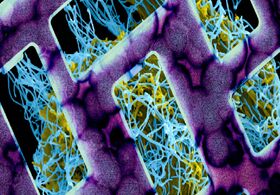手机能监控疾病了
|
In a new study out of the Massachusetts Institute of Technology, health researchers make the case for using real-time cell-phone data to track and mitigate major disease outbreaks. Unfortunately, several barriers—including privacy concerns and a lack of data legislation—are likely to stop this kind of information from ever getting to researchers. Earlier this year, researchers at MIT set out to see if they could reasonably predict how a disease might move through a city by looking at commute routes.
Through a deal with Singapore telecom Singtel, MIT researchers were able to get access to four months' worth of anonymized cell-phone location data from 2011. The disease they were tracking was a 2013 outbreak of dengue fever, a virus transmitted via mosquito that manifests in headaches, muscle pain, and vomiting. The researchers hypothesized that the disease traveled around the city along the same routes as people's phones did. When they tested their predictions against census data for 2013 and 2014, which recorded the number of cases over the course of two years, they found the models were accurately estimating the growth trajectory the disease. The study is remarkable for its ability to examine the pattern of dengue's spread as it moves inside smaller regions like cities and towns. Typically, researchers study disease at a much broader level—think states and countries. But smartphone data allows researchers and scientists to see more detailed information about the way people interact with their environment and each other. "This data can be really useful in an emerging situation," says Emanuele Massaro, a scientist at École polytechnique fédérale de Lausanne in Switzerland and the lead author on the paper. He argues that "scientists, NGOs, and political decision makers" should have access to cell-phone data more broadly, so they can more easily contain disease outbreaks. |









